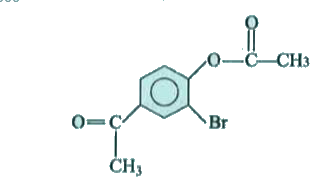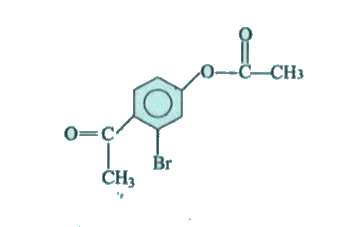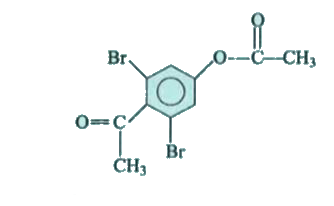In an electrophilic aromatic substitution reaction, the nitro group is meta directing because of it?
decreases the electron density at ortho and para position
decreases the electron density at meta position
increases the electron density at meta position
increases the electron density at ortho and para position
The correct Answer is:B
To understand why the nitro group (NO2) is a meta-directing group in electrophilic aromatic substitution reactions, we can break down the reasoning into a series of steps:
1. Identify the Structure of Nitrobenzene:
- Nitrobenzene consists of a benzene ring with a nitro group (NO2) attached to it. The structure can be represented as follows:
NO2∣C6H5
2. Recognize the Nature of the Nitro Group:
- The nitro group is an electron-withdrawing group due to its strong electronegativity and resonance effects. This means it pulls electron density away from the benzene ring.
3. Understand the Effect of Electron-Withdrawing Groups:
- Electron-withdrawing groups deactivate the benzene ring towards electrophilic substitution reactions. This means that the presence of the nitro group makes it less reactive towards electrophiles.
4. Draw Resonance Structures:
- When considering the resonance structures of nitrobenzene, we can see how the positive charge develops:
- One resonance structure shows a positive charge at the ortho and para positions when the double bond shifts towards the nitro group.
- The resonance structures can be represented as:
- Structure 1: Nitro group attached, benzene ring with double bonds.
- Structure 2: Shift of double bond leads to positive charge at ortho position.
- Structure 3: Shift of double bond leads to positive charge at para position.
- Structure 4: No positive charge at meta position.
5. Analyze Electron Density:
- Due to the electron-withdrawing nature of the nitro group, the electron density at the ortho and para positions decreases significantly because these positions are where the positive charges develop in the resonance structures.
- Conversely, the meta position does not develop a positive charge in the resonance structures, which means it retains relatively higher electron density compared to the ortho and para positions.
6. Conclusion:
- Since the electron density at the meta position is higher than at the ortho and para positions, the nitro group directs incoming electrophiles to the meta position during electrophilic aromatic substitution reactions. Thus, the nitro group is a meta-directing group.
Final Answer:
The nitro group is meta directing in electrophilic aromatic substitution reactions because it decreases the electron density at the ortho and para positions while leaving the meta position relatively more electron-rich.
- Nitrobenzene consists of a benzene ring with a nitro group (NO2) attached to it. The structure can be represented as follows:
NO2∣C6H5
- The nitro group is an electron-withdrawing group due to its strong electronegativity and resonance effects. This means it pulls electron density away from the benzene ring.
- Electron-withdrawing groups deactivate the benzene ring towards electrophilic substitution reactions. This means that the presence of the nitro group makes it less reactive towards electrophiles.
- When considering the resonance structures of nitrobenzene, we can see how the positive charge develops:
- One resonance structure shows a positive charge at the ortho and para positions when the double bond shifts towards the nitro group.
- The resonance structures can be represented as:
- Structure 1: Nitro group attached, benzene ring with double bonds.
- Structure 2: Shift of double bond leads to positive charge at ortho position.
- Structure 3: Shift of double bond leads to positive charge at para position.
- Structure 4: No positive charge at meta position.
- Due to the electron-withdrawing nature of the nitro group, the electron density at the ortho and para positions decreases significantly because these positions are where the positive charges develop in the resonance structures.
- Conversely, the meta position does not develop a positive charge in the resonance structures, which means it retains relatively higher electron density compared to the ortho and para positions.
- Since the electron density at the meta position is higher than at the ortho and para positions, the nitro group directs incoming electrophiles to the meta position during electrophilic aromatic substitution reactions. Thus, the nitro group is a meta-directing group.
The nitro group is meta directing in electrophilic aromatic substitution reactions because it decreases the electron density at the ortho and para positions while leaving the meta position relatively more electron-rich.
Topper's Solved these Questions
Similar Questions
Knowledge Check
The electrophilic aromatic substitution proceeds through a :
Afree radicalBsigma complexCbenzyneDcarbeneIf aromatic ring is substituted by more than groups then electrophilic aromatic substitution reaction take place according to more activating group.Types of group which donate electron in aromatic ring known as activating groups.
Major product formation take place at which position in this reaction :
 A3B1C6D4
A3B1C6D4If aromatic ring is substituted by more than groups then electrophilic aromatic substitution reaction take place according to more activating group.Types of group which donate electron in aromatic ring known as activating groups.

Find out correct product of reaction.A B
B C
C DNO reaction
DNO reaction
Sulfonation differs from most of electrophilic aromatic substitution reactions with the fact that the reaction-
View SolutionAmino group is o, p-directing for electrophilic substitution reaction. But, on nitration the major product is m-nitroaniline because
View SolutionIn which of the following compound electrophilic aromatic substitution take place in phenyl ring present in left hand side ?
View SolutionHalogens are deactivating yet ortho,para directing in electrophilic aromatic substitution. Which statements do not explain this ?
View SolutionThe ether that undergoes electrophilic substitution reactions is
View Solution